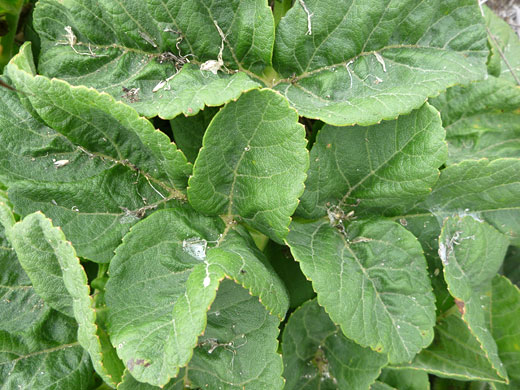Common name:
Henderson's angelica
Family:
Scientific name:
Angelica hendersonii
Main flower color:
Range:
Coastal areas of Washington, Oregon and north/central California
Height:
Up to 6 feet
Habitat:
Cliffs and scrubland in coastal areas
Leaves:
Ternately divided into pinnately divided leaflets, oblong to lanceolate in shape
Season:
July to August
Angelica hendersonii is the one of the two most common angelica species in coastal areas, generally found below 400 feet elevation (the other is angelica lucida). Leaves are divided several times into somewhat irregularly shaped leaflets, variable in some characteristics; they may be pointed or rounded at the tip, lanceolate or oblong in shape, and have small or large teeth along the edges. Leaves are quite thick; they are colored light green on top and whitish-green underneath, due to a fine covering of tomentose hairs, also found on the leaf stems, stalk and flower pedicels.
The inflorescence is a compound umbel typical of the carrot family; formed of between 20 and 65 umbellets each terminating in a tight, spherical cluster of five-petaled white flowers, which have protruding stamens when mature. The umbellets may remain separate, or merge to give the appearance of a single large cluster. Flowers become purplish as they wither.
The inflorescence is a compound umbel typical of the carrot family; formed of between 20 and 65 umbellets each terminating in a tight, spherical cluster of five-petaled white flowers, which have protruding stamens when mature. The umbellets may remain separate, or merge to give the appearance of a single large cluster. Flowers become purplish as they wither.
All Contents © Copyright The American Southwest | Comments and Questions | Contribute | Site Map







